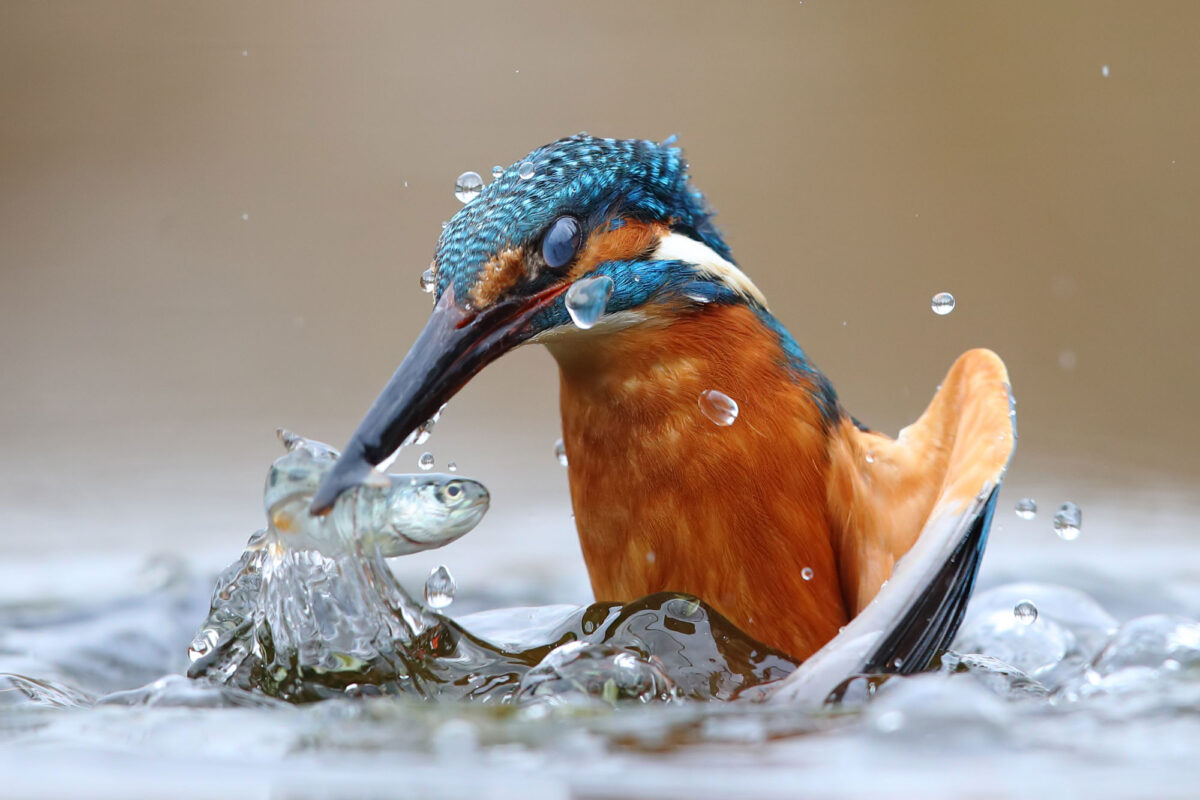Page snapshot: Fun facts about kingfishers.
Topics covered on this page: Kingfishers that laugh; Kingfishers that hover; Kingfishers that inspire engineers; Kingfishers as fashion; Kingfishers in myth; Kingfishers in art; Kingfishers in sports; Resources.
Credits: Funded by the National Science Foundation. Any opinions, findings, and conclusions or recommendations expressed in this material are those of the author(s) and do not necessarily reflect the views of the National Science Foundation. Page by E.J. Hermsen (2024).
Updates: Page last updated May 20, 2024.
Image above: A common kingfisher (Alcedo atthis), Piedmont, Italy. Photo by Luca Casale (Wikimedia Commons, Creative Commons Attribution-ShareAlike 4.0 International license, image resized).
Kingfishers that laugh
The aptly named laughing kookaburra (Dacelo novaeguineae) may be the most well known of the kingfishers, although many people may recognize it more by sound than by sight. This kingfisher's call was used in old movies over jungle scenes. This bird lives only in Australia, but its call is used in movies set all over the world. Examples of movies that use the laughing kookaburra call include some of the early Tarzan films, The Wizard of Oz, The Treasure of the Sierra Madre, and The Lost World: Jurassic Park. The laughing kookaburra is also a character in the famous Australian children's song "Kookaburra," written by Marion Sinclair.
The call of a laughing kookaburra. Video by Brookfield Zoo via YouTube.
Kingfishers that hover
The pied kingfisher (Ceryle rudis) from Africa and Asia is the world's largest hovering bird. This kingfisher uses hovering to help it spot fish in the water.
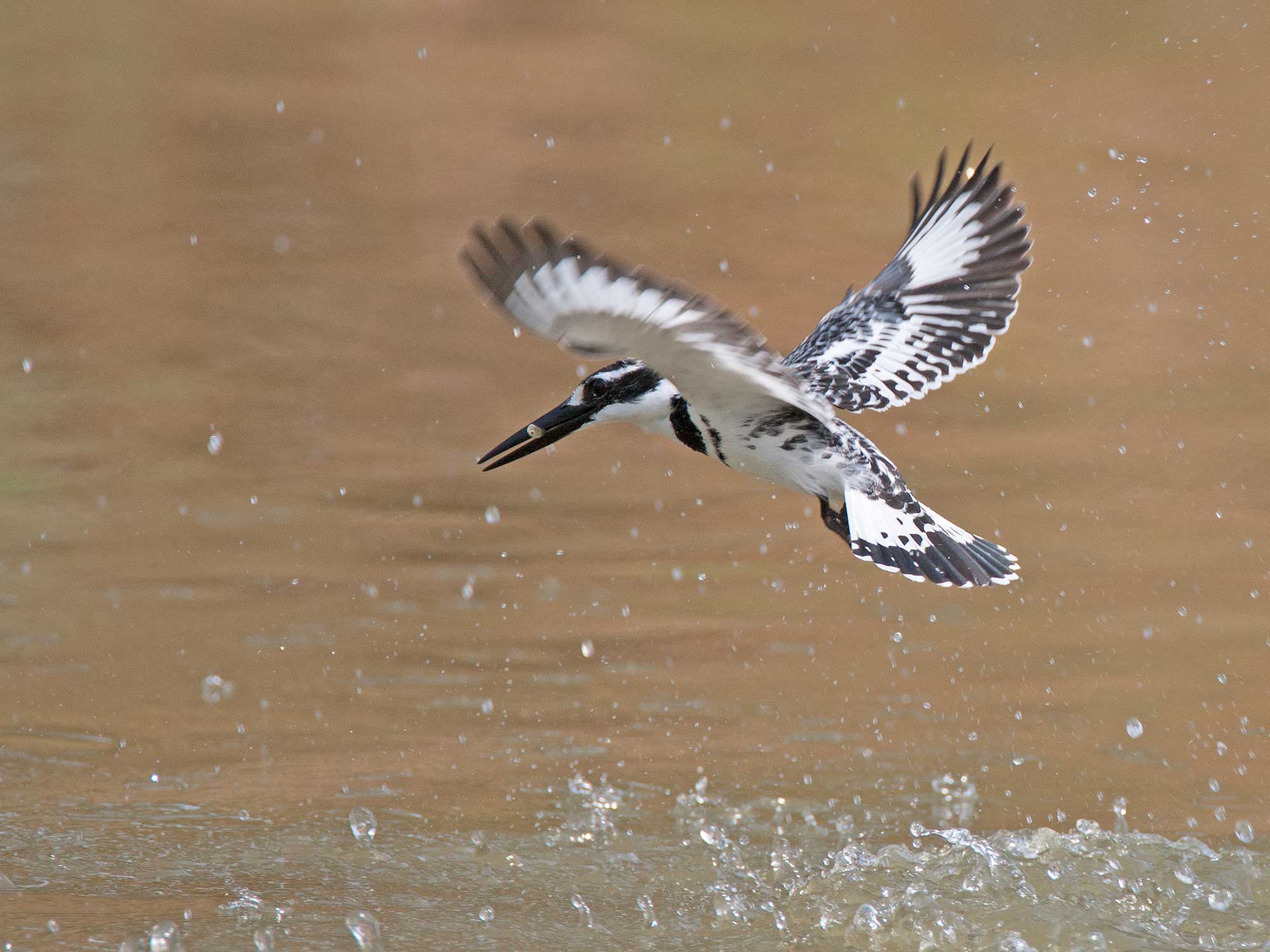
Pied kingfisher after catching a fish. Photo by Artemy Voikhansky (Wikimedia Commons, Creative Commons Attribution-ShareAlike 4.0 International license, image resized).
Video of a pied kingfisher hovering as a way to spot fish. "Why hovering is a key skill for the pied kingfisher" by Smithsonian Channel, via YouTube.
Kingfishers that inspire engineers
The head of the kingfisher inspired the redesign of the Japanese bullet train to make it more aerodynamic. In the past, the train would make a sonic boom when it emerged from tunnels because the front of the train was not aerodynamic enough. An engineer was inspired by the kingfisher, which has an aerodynamic break that allows it to go from air to water seamlessly as it dives. When engineers tested a kingfisher beak-like design for the bullet train, they found that not only did it solve the problem of the sonic booms, it also allowed the train to operate more efficiently overall.
A video about how and why the Japanese bullet train design was inspired by the kingfisher. "How Kingfisher Inspried Bullet Trains" by Interesting Engineering via YouTube.
Kingfishers as fashion
For centuries, the striking blue feathers of kingfishers found in Asia were prized for making headdresses and jewelry in China. The art of making these items was known as dian-cui (also written tian-tsui). Kingfisher feather headdresses and other accessories were worn by empresses, consorts of the emperor, and other high-status women. Kingfisher feathers were also used in decorative objects. Because each bird could provide only a small number of blue feathers, the feathers of many birds were used for elaborate pieces. The last workshop to specialize in these ornate kingfisher feather products closed in the 1930s.
Due to their delicate nature, relatively few antique kingfisher headdresses and other items have survived. Today, using kingfisher feathers to make these types of objects is controversial because taking the feathers may involve harming or killing the birds. The style of these items, which used inlayed metal filagree, can be imitated using a variety of other materials, like ribbon, dyed goose feathers, peacock feathers, or cloisonné (colored glass enameling).
Kingfisher feathers were also used in European and American fashion, most notably during the Victorian- and Edwardian-era (1830s to 1914) trend for large, fashionable hats adorned with bird feathers. During these eras, many species of native and exotic birds were nearly killed off in pursuit of their feathers and skins, which were used solely for ornamentation. Some hats were even decorated with entire stuffed birds!
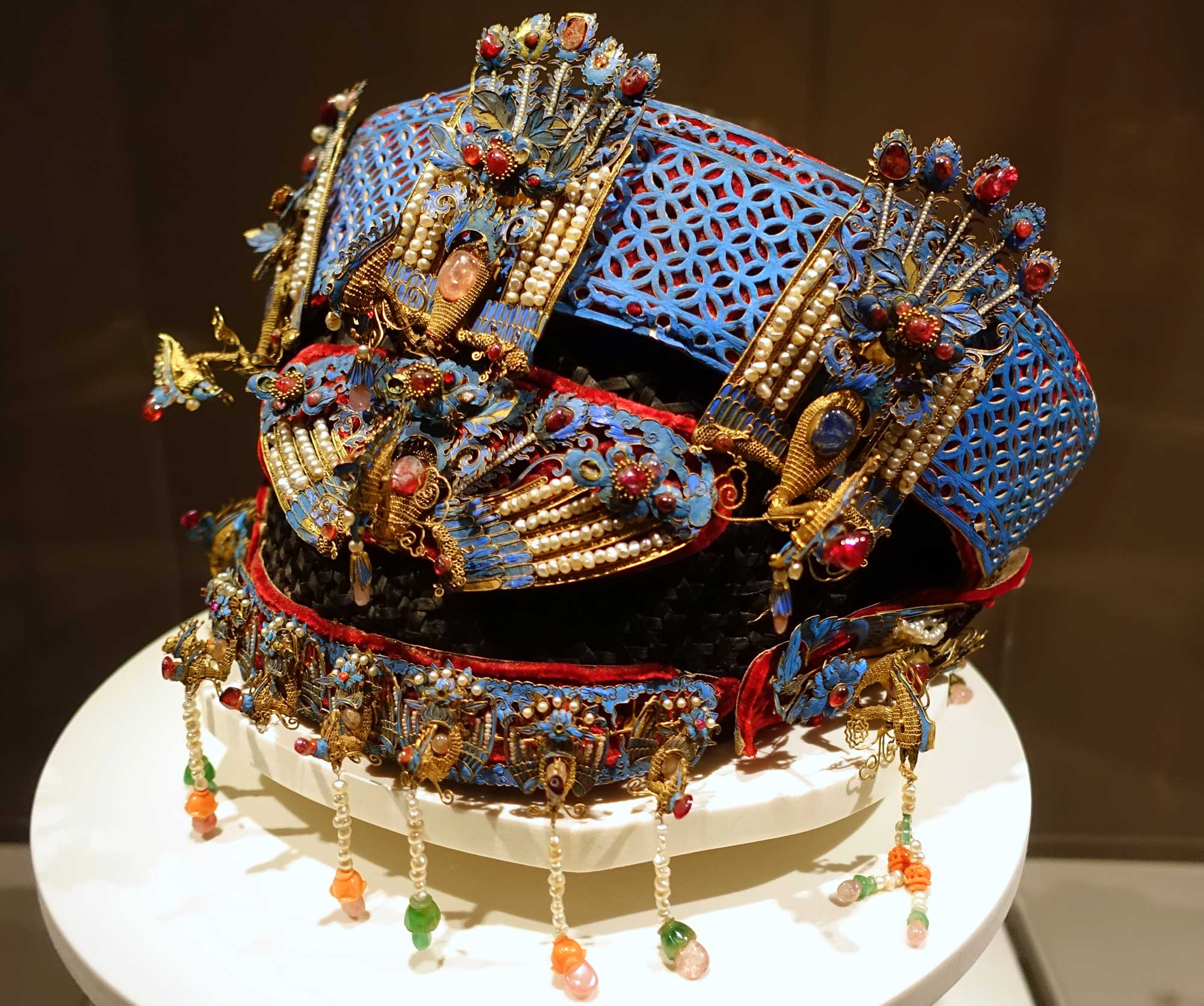
An elaborate fengguan (phoenix crown), a type of headdress worn by noblewomen, decorated with blue kingfisher feathers, Tongzhi or Guangxu Period, late 1800s. Photo by Daderot from the Peabody Essex Museum in Salem, Massachusetts, USA (public domain).
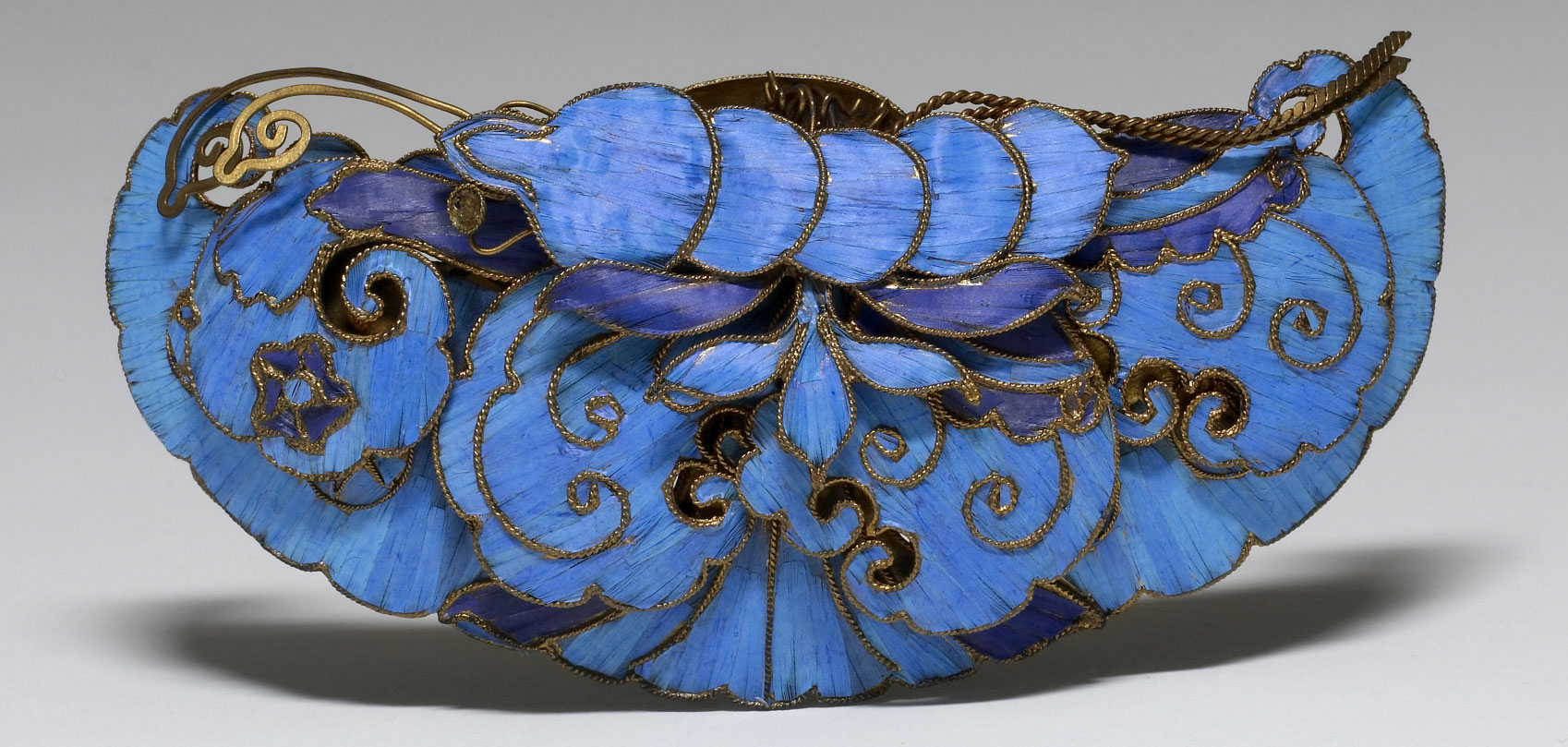
A hair ornament decorated with blue kingfisher feathers that may have belonged to Cixi, the Empress Dowager of China, dating from between 1800 and 1900, Qing Dynasty. Source: The Walters Art Museum Online Collection (Creative Commons 0 1.0 Deed).
Kingfishers in myth
In ancient Greek myth, the beautiful woman Alcyone was turned into a halcyon bird (a mythical bird usually associated with the common kingfisher) by the gods. The halcyon bird of myth was said to nest during a period of good weather around the winter solstice. This period was the halcyon days.
There are a few versions of the story of why Alcyone was turned into a halcyon. One version of the story is that Alcyone and her husband Ceyx thought of themselves as gods and began calling each other by the gods' names. Their behavior angered the god Zeus, who killed Ceyx by hitting his ship with a lightening bolt. Alcyone, grief-stricken, drowned herself in the sea. Zeus felt sorry for Alcyone and Ceyx and transformed them into birds.
Today, Halcyon and Ceyx are genus names for kingfishers. Halcyon is widely distributed in Africa and Asia, whereas Ceyx is found in India, the Philippines, Southeast Asia, and Australasia. The "halcyon days" refer to a time of calm weather, peacefulness, or happiness.
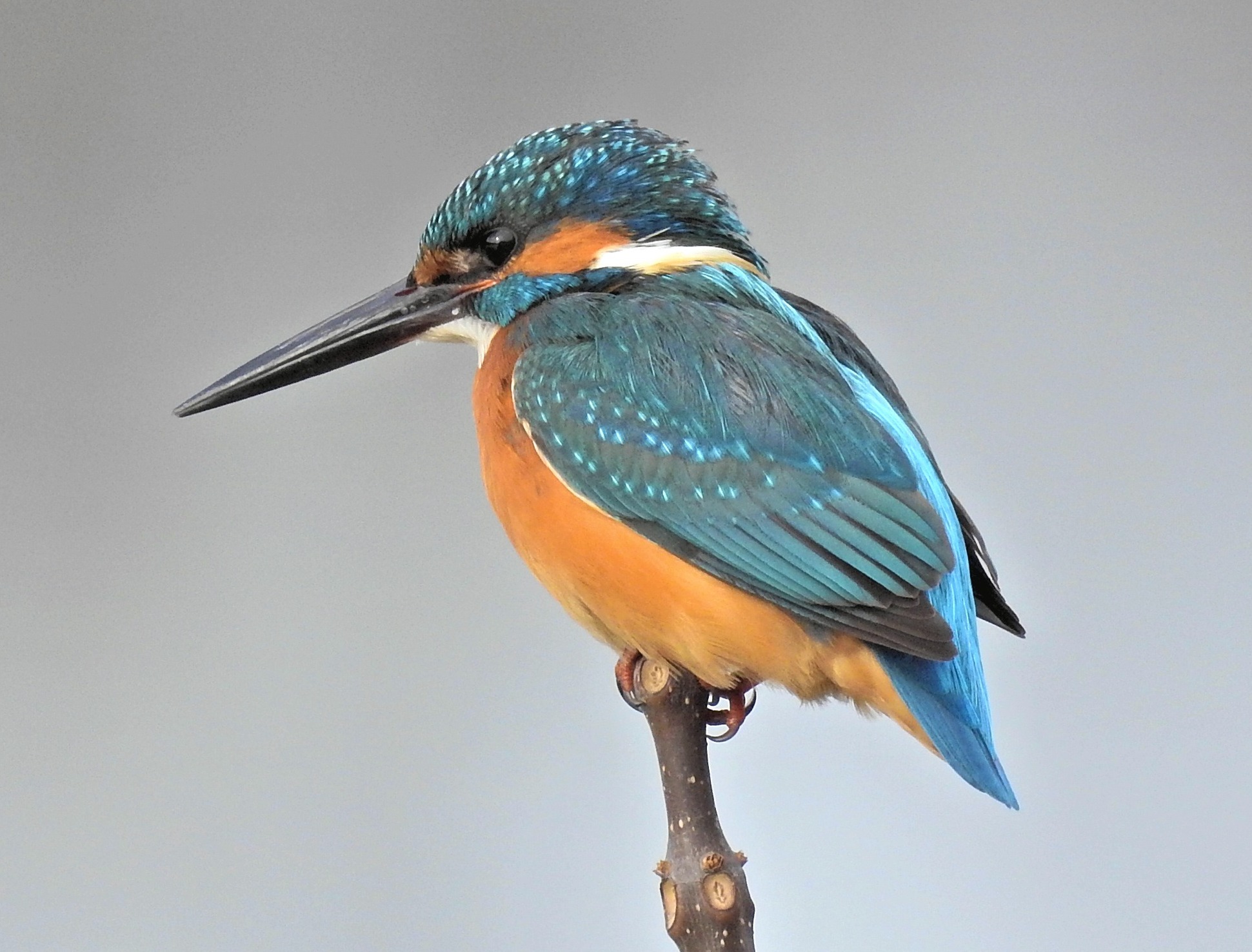
A common kingfisher (Alcedo atthis), Rustavi, Georgia. The common kingfisher is widespread in Eurasia, also reacing northern Africa and Australasia. Photo by კახაბერ გოგოლაშვილი (Wikimedia Commons, Creative Commons Attribution-ShareAlike 3.0 Unported license).
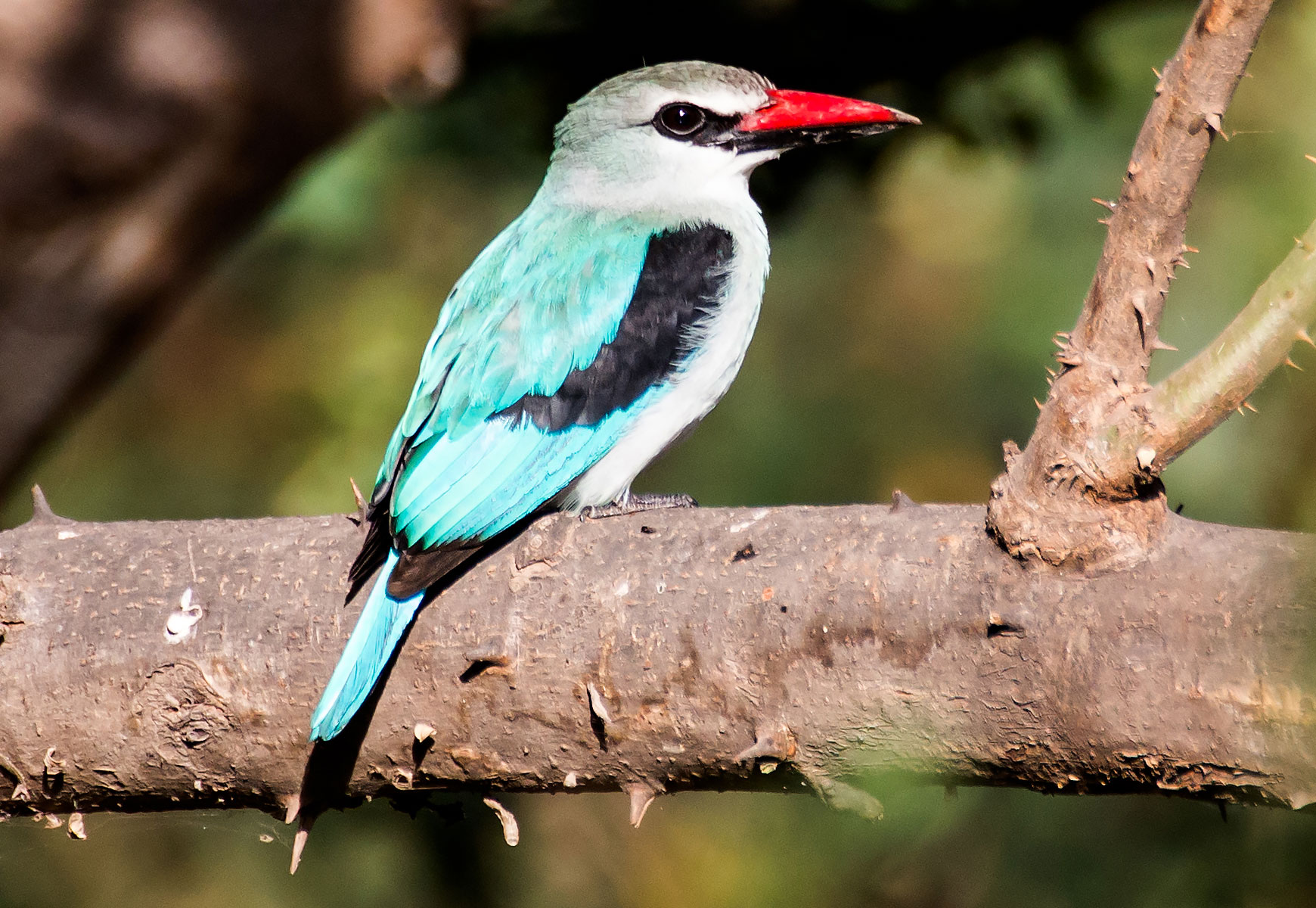
A woodland kingfisher (Halcyon senegalensis), Ethiopia. Photo by David Castor (Wikimedia Commons, public domain).
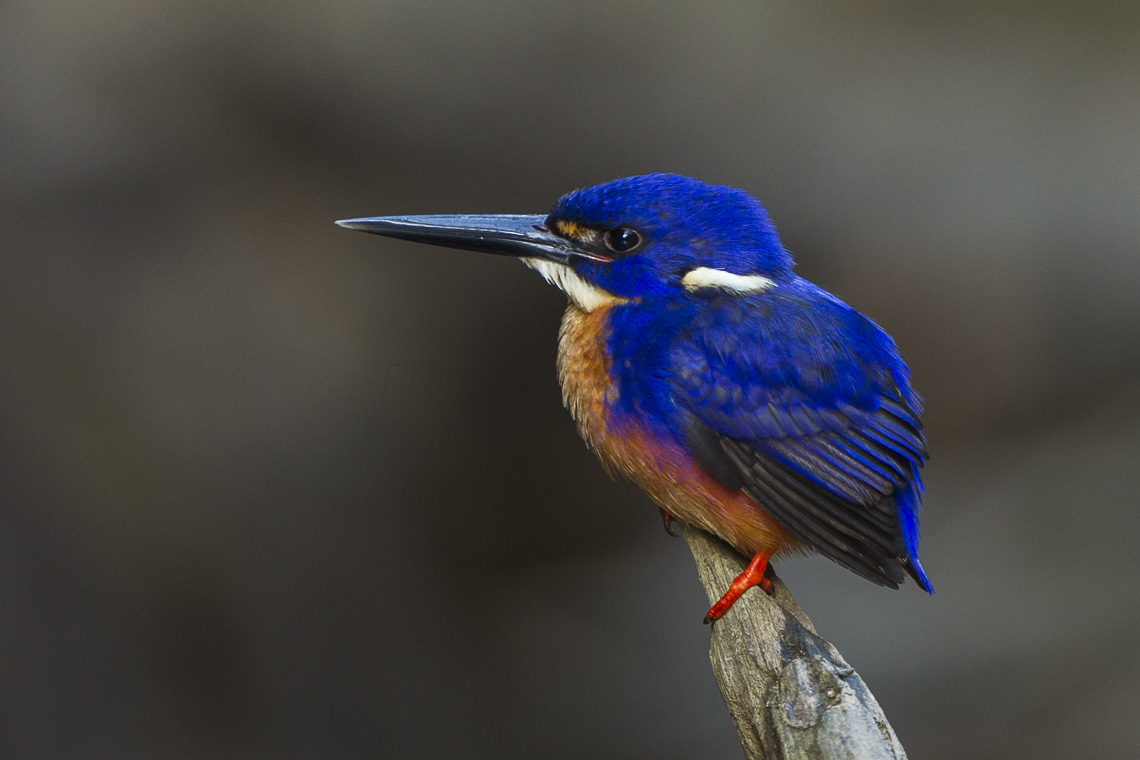
An azure kingfisher (Ceyx azureus), Queensland, Australia. Photo by Francesco Veronesi (flickr, Creative Commons Attribution-ShareAlike 2.0 Generic).
Kingfishers in art
Kingfishers are frequent subjects in art. Even Vincent van Gogh painted a kingfisher. His painting Kingfisher by the Waterside is held by the Van Gogh Museum in Amsterdam.
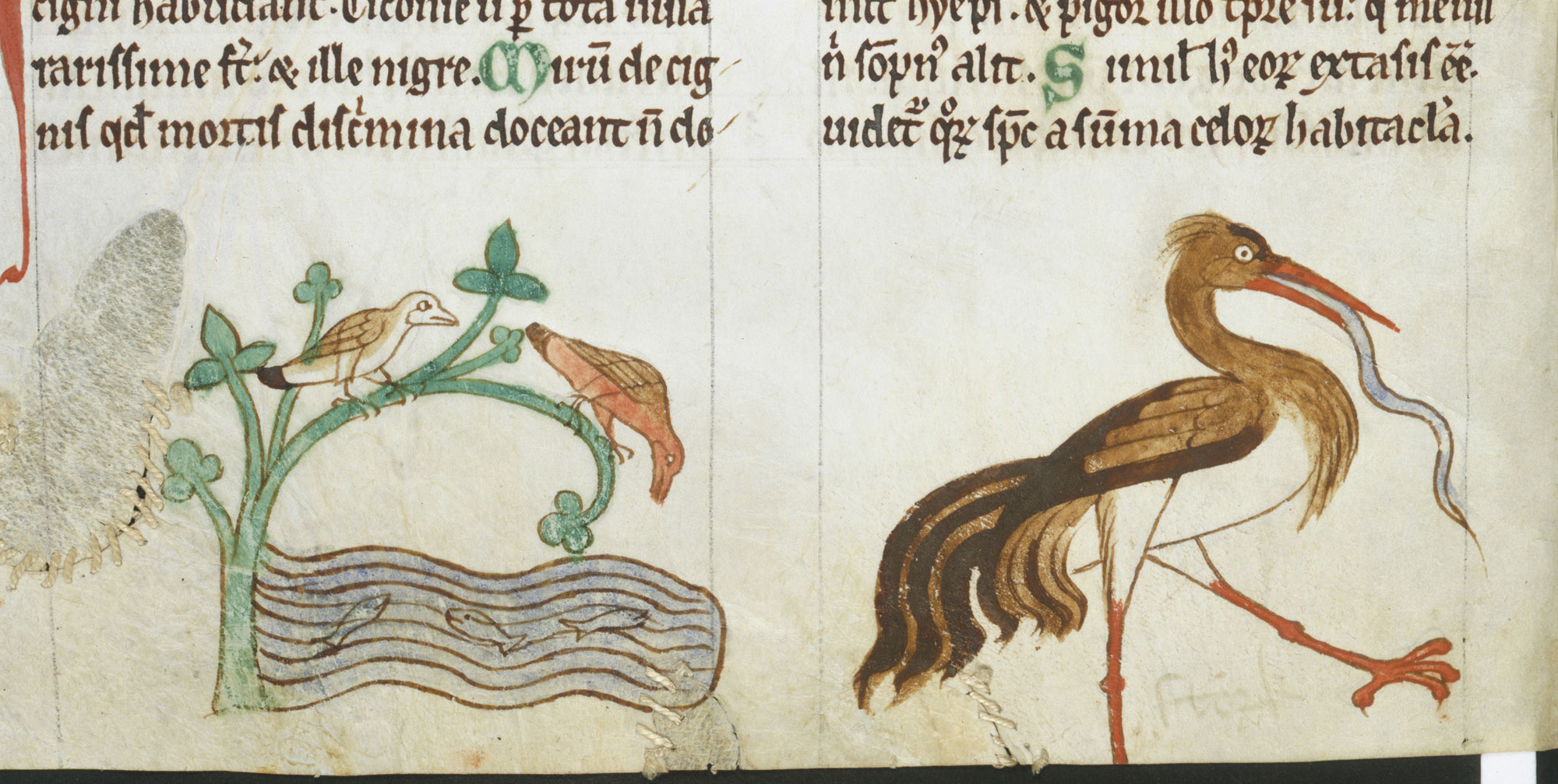
Drawing of kingfishers (left panel) in Ireland from Topographia Hibernica by Gerald of Wales, ca. 1220. Source: British Library (Wikimedia Commons, public domain).

A young woman mourning a dead dove, a partridge, and a kingfisher by Dutch artist Jacob de Gheyn II (ca. 1620). Source: Nationalmuseum (Wikimedia Commons, public domain).
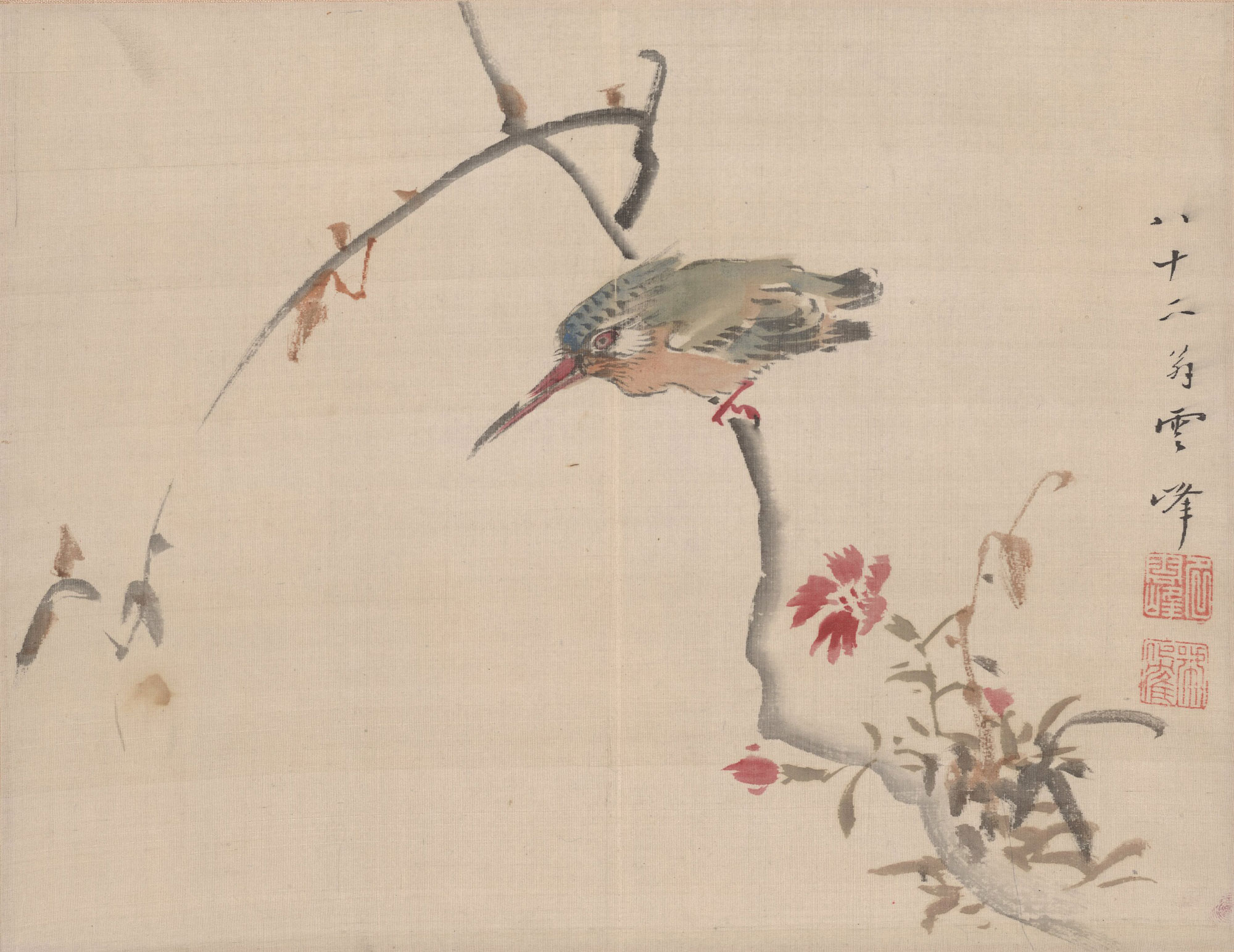
Kingfisher on a Branch by Japanese artist Ōoka Unpō (ca. 1851). Source: Minneapolis Institute of Art (Wikimedia Commons, public domain).

Kingfisher by the Waterside by Vincent Van Gogh (1887). Via Wikimedia Commons.
Kingfishers in sports
Recently, some students have campaigned to make the belted kingfisher (Megaceryle alcyon) the mascot of the University of Illinois.
Resources
Webpages
Diancui, the traditional Chinese jewelry craft that ruffles feathers (hanfugirl): https://hanfugirl.sg/2022/09/14/diancui-the-traditional-chinese-jewelry-craft-that-ruffles-feathers/
Halcyon days (BirdGuides): https://www.birdguides.com/articles/halcyon-days/
Kingfisher by the waterside (Van Gogh Museum): https://www.vangoghmuseum.nl/en/collection/s0100V1962
Kingfisher headdress (National Museums Scotland): https://www.nms.ac.uk/explore-our-collections/stories/global-arts-cultures-and-design/kingfisher-headdress/
Kingfisher headdress from China (Art Institute Chicago): https://www.artic.edu/exhibitions/9703/kingfisher-headdresses-from-china
Pied Kingfisher (eBird): https://ebird.org/species/piekin1
Articles & blog posts
Earthsky Editors. 2012. A kingfisher inspired a bullet train. EarthSky, 29 June 2012. https://earthsky.org/earth/sunni-robertson-on-how-a-kingfisher-inspired-a-bullet-train/
Lund, N. 2020. The University of Illinois might make a kingfisher its new mascot. It should! Audobon Magazine, 18 September 2020. https://www.audubon.org/news/the-university-illinois-might-make-kingfisher-its-new-mascot-it-should
McKeag, T. 2012. How one engineer's birdwatching made Japan's bullet train better. GreenBiz, 19 October 2012. https://www.greenbiz.com/article/how-one-engineers-birdwatching-made-japans-bullet-train-better
Stewart, J. 2022. Meet the laughing kookaburra, the bird with a distinctive call that's in Hollywood films. My Modern Met. https://mymodernmet.com/laughing-kookaburra-sound-effect/
Wee, Y.C. 2017. Pied kingfisher and hovering. Bird Ecology Study Group [blog], 22 April 2017. https://besgroup.org/2017/04/22/pied-kingfisher-and-hovering/
Technical papers
Gresseth, G.K. 1964. The myth of Alcyone. Transactions and Proceedings of the American Philological Association 95: 88-98.



